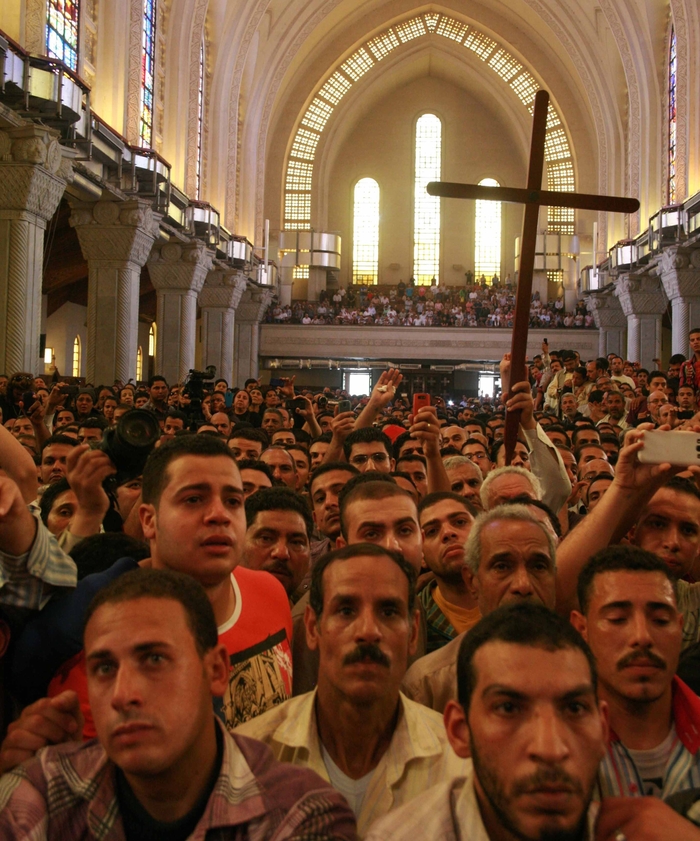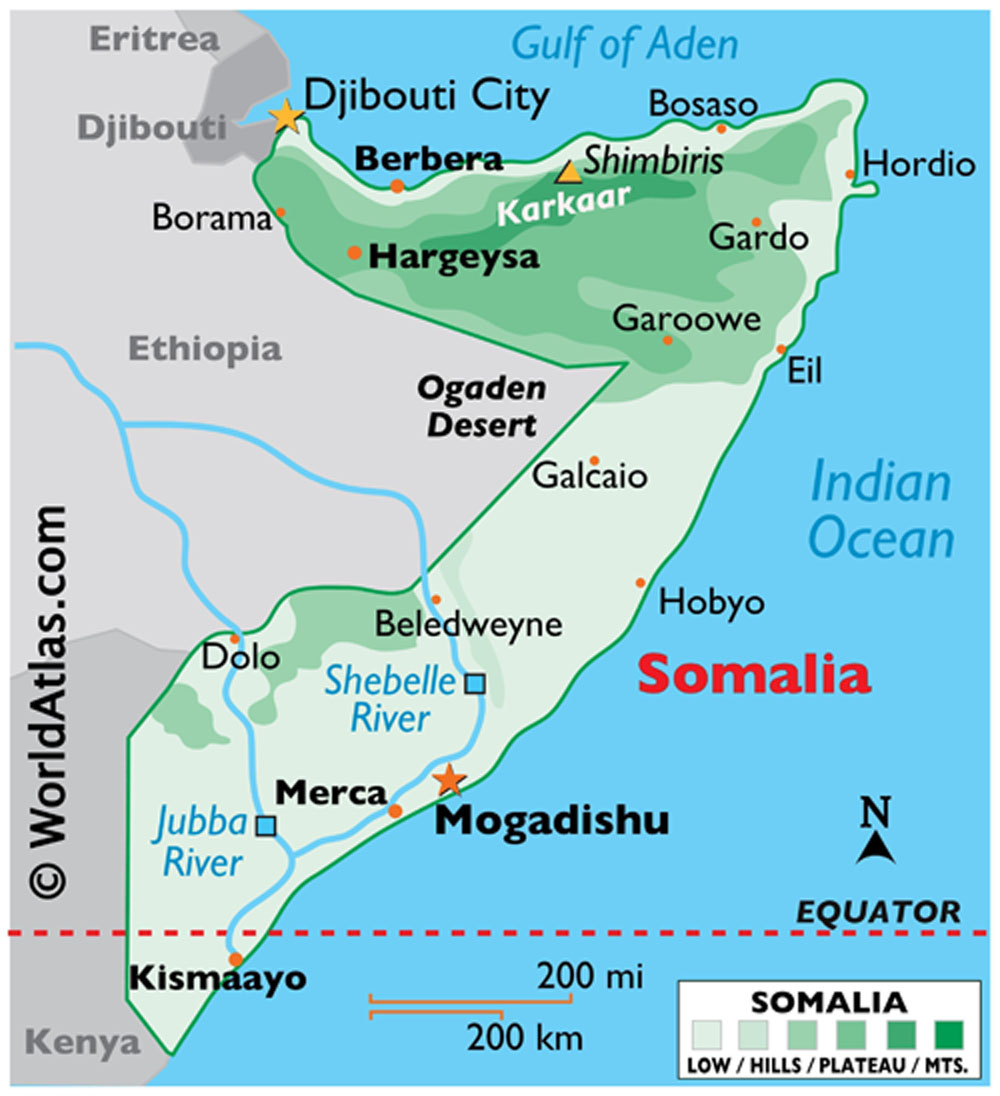world news
China bans African students from worshiping in churches to prevent ‘foreign infiltration’

The Chinese government has banned African international students from worshiping in Christian churches under the pretext of “preventing foreign infiltration through religion,” a persecution watchdog group has revealed.
A group of over 80 African students who are residing in a city in the northeastern province of Liaoning told Chinese persecution watchdog Bitter Winter that in September, the person in charge of the Three-Self church that they attended received a government order prohibiting foreigners from participating in gatherings at the church.
“We just want to have a place to congregate,” one student told the outlet.
A Chinese believer at the church said that at an “anti-religious infiltration” symposium held by the local government in August, the officials questioned the person in charge of the church about foreign-related activities.
Shortly after the symposium, the international students were driven out of the church.
“In our hearts, we were unwilling to see them leave,” the Chinese believer said.
The government also pressured or threatened other Christian meeting venues. When the African students asked to be allowed to attend gatherings at another Three-Self church, they were turned down.
A similar incident occurred at a university in the central province of Hubei, where a church attended by over 40 African students received repeated threats from government officials who demanded the church’s director drive out the international students.
The students now are forced to worship in secret, disguising their gatherings like birthday parties, according to Bitter Winter.
One of the students said that he doesn’t understand how the government can claim that there is “freedom of belief” in China. “I don’t understand why China’s rulers won’t allow foreigners to hold religious gatherings,” the student said. “This has forced us to practice our faith in hiding.”
Bitter Winter also revealed that universities in the provinces of Heilongjiang, Jilin, Henan, and elsewhere are required to investigate the religious status of international students and teachers.
An administrator at a university in Jiujiang, a prefecture-level city in the southeastern province of Jiangxi, said that the government secretly monitors African students.
“If any people are discovered to be too close to them, both parties will be watched and investigated. But most African students are completely unaware that they’re being monitored,” the administrator explained.
“As soon as African students are discovered attending gatherings at house churches or spreading the Gospel to other students, they will be expelled from the school immediately,” the administrator said.
According to the administrator, the school has already expelled one African student for preaching the Gospel to Chinese classmates. The student was later deported to his home country.
Under Chinese law, foreigners are prohibited from setting up religious organizations or proselytizing in China, although the law wasn’t enforced until President Xi Jinping took office in 2012.
Recently, 13 South Korean families living in China as part of a mission group were deported after Communist officials decided their presence in the country was “illegal” due to their evangelistic work.
China is ranked 27th on Open Doors USA’s World Watch List of 50 countries where it’s most difficult to be a Christian.
In recent years, the Communist Party government has banned online sales of Bibles, leveled churches, and arrested hundreds of Christians for “inciting subversion of state power.”
In July, it was reported that since the Regulations on Religious Affairs legislation was implemented last year, schools around China have taught children that Christianity is an “evil cult.”
Sources: Christian Post
world news
Christian woman granted secret bail after arrest on false blasphemy charge

A trial court in Pakistan has granted rare bail to a Christian arrested on blasphemy charges, her attorney said.
Additional Sessions Judge Gojra Waseem Mubarak granted post-arrest bail to Saima Masih, widow of Farhad Masih, on Sept. 10, though for security reasons it was not revealed until this week.
The bail was granted a month after a Muslim neighbor falsely accused her and her younger sister, Sonia Faryaad, of throwing a sack containing quranic pages in an open area near her home on Aug. 6, said the sisters’ attorney, Haneef Mattu. Residents of Kathore village Chak No. 304 Gojra, Toba Tek Singh District, Punjab Province, said the sisters were falsely accused of blasphemy by Muhammad Haider after Saima Masih rejected his “indecent advances,” Mattu said.
Saima Masih, a volunteer health worker, has two children. Sonia Bibi, mother of three children and a teacher at an adult literacy center, managed to escape from the village with her family after the allegations surfaced, Mattu said.
He had filed pre-arrest bail for Sonia Bibi that an additional sessions court rejected, he said. Mattu later filed her bail petition in the Lahore High Court but withdrew it after an initial police investigation cleared her of the alleged offense, he said.
Mattu said that after the court granted post-arrest bail for Saima Masih, he filed a petition in the Lahore High Court to quash the frivolous charges against the two sisters.
“There are several inconsistencies in the case, including the delayed filing of the First Information Report [FIR] and the absence of direct witnesses,” Mattu told Christian Daily International-Morning Star News. “However, the court turned down the petition, advising that we should file a fresh application under Section 265-K of the Criminal Procedure Code (CrPC). This section allows the court to acquit the accused even before the framing of the charges.”
He is now awaiting the police report in order to begin proceedings under Section 265-K.
The sisters and their families are now residing at an undisclosed location due to fears for their security, he said.
Akmal Bhatti, chairman of the Minorities Alliance Pakistan, previously told Christian Daily International-Morning Star News that a Muslim mob had attempted to kill Saima Masih when news of the blasphemy allegation spread in the area but timely police intervention had saved her life.
Sajid Christopher of the Human Friends Organization said both women and their families have endured immense hardships, including wrongful accusations, death threats and prolonged legal battles, all of which have brought their lives to a standstill.
“Despite her release, Saima’s safety remains in jeopardy as societal pressures and the possibility of vigilantism pose ongoing threats,” Christopher said. “Such accusations often lead to the accused being ostracized, regardless of their legal outcome, which means her life and that of her children remain under constant risk.”
He added that Sonia Bibi has faced even more severe challenges.
“Forced into hiding with her three children, Sonia’s family was subjected to immense stress,” he said. “Although the investigating officer did not find Sonia guilty in his inquiry, the fear for her safety continues. The initial rejection of her bail by the sessions court further intensified the threats they faced, and even now, the family remains vulnerable to attacks from extremist elements who often act outside the legal framework.”
Christopher said that no one should live in fear for their life due to blasphemy accusations, particularly when investigations fail to substantiate allegations.
“We call upon the authorities to ensure that both Saima and Sonia, as well as their families, are provided with adequate protection and that their safety is guaranteed,” he said. “Furthermore, there must be accountability for those who make false accusations, and the justice system must take immediate steps to protect the innocent from unwarranted harm.”
Minority rights activist Joseph Jansen said that the Christian sisters’ case was another example of how blasphemy laws are used to settle personal vendettas.
“These laws, which carry the death penalty, have led to mob violence and extrajudicial executions,” he said. “This must stop before more innocent lives are lost.”
Pakistan ranked seventh on Open Doors’ 2024 World Watch List of the most difficult places to be a Christian, as it was the previous year.
Sources:Christian Post
world news
ലോകമെമ്പാടും ക്രൈസ്തവര്ക്ക് നേരെയുള്ള പീഡനത്തില് വര്ദ്ധനവ്; പുതിയ റിപ്പോര്ട്ടുമായി എസിഎന്

ലണ്ടന്: കഴിഞ്ഞ രണ്ടു വര്ഷത്തിനിടെ ലോകമെമ്പാടുമുള്ള ക്രൈസ്തവര്ക്ക് നേരെയുള്ള പീഡനം കൂടുതൽ വഷളായതായി റിപ്പോര്ട്ട്. പൊന്തിഫിക്കല് സന്നദ്ധ സംഘടനയായ എയിഡ് ടു ദ ചർച്ച് ഇൻ നീഡ് (ACN) ഇന്നലെ ഒക്ടോബർ 22നു പുറത്തുവിട്ട റിപ്പോര്ട്ടിലാണ് ക്രൈസ്തവ വിരുദ്ധ പീഡനം രൂക്ഷമായതിന്റെ വിവരങ്ങള് രേഖപ്പെടുത്തിയിരിക്കുന്നത്. ഇസ്ലാമിക തീവ്രവാദികള്, ഭരണകൂട അടിച്ചമർത്തൽ, ക്രിമിനൽ സംഘങ്ങളും തീവ്രവാദികളും നടത്തിയ ആക്രമണങ്ങള് തുടങ്ങിയ നിരവധി അതിക്രമങ്ങളാണ് ക്രൈസ്തവ വിരുദ്ധ പീഡനത്തിന് കാരണമായി സംഘടന ചൂണ്ടിക്കാട്ടുന്നത്.
ബുർക്കിനഫാസോ, നൈജീരിയ, മൊസാംബിക്ക് ഉള്പ്പെടെ ആറ് ആഫ്രിക്കന് രാജ്യങ്ങളില് ഇസ്ലാമിക തീവ്രവാദികളുടെ അക്രമം വർദ്ധിച്ചതായി എയിഡ് ടു ദ ചർച്ച് ഇൻ നീഡ് പറയുന്നു. 2022 ആഗസ്ത് മുതൽ 2024 ജൂൺ വരെയുള്ള വിവരങ്ങള് ഉള്ക്കൊള്ളിച്ചുള്ള റിപ്പോർട്ടില് സർവേയിൽ പങ്കെടുത്ത 60% രാജ്യങ്ങളിലും ക്രൈസ്തവര്ക്ക് നേരെയുള്ള മനുഷ്യാവകാശ ലംഘനങ്ങൾ വർദ്ധിച്ചതായി വ്യക്തമാണ്. സഹേൽ മേഖലയിലാകെ വലിയ രീതിയിലുള്ള തീവ്രവാദ അക്രമമാണ് നടക്കുന്നത്.
ലോകത്തിൻ്റെ പല ഭാഗങ്ങളിലും സ്ഥിതി സമാനമാണ്. സ്വേച്ഛാധിപത്യ ഭരണകൂടങ്ങൾ ഭരണകൂടത്തിന്റെയോ പ്രാദേശിക സമൂഹത്തിന്റെയോ ശത്രുക്കളായാണ് ക്രൈസ്തവരെ കാണുന്നത്. ഇന്ത്യ, ചൈന, എറിത്രിയ, ഇറാൻ തുടങ്ങിയ രാജ്യങ്ങളിലെ ഭരണകൂടങ്ങള് അടിച്ചമർത്തൽ നടപടികളിലൂടെ ക്രൈസ്തവരെ ലക്ഷ്യമിടുന്നുണ്ടെന്നും ഭാരതത്തില് ക്രൈസ്തവര്ക്ക് നേരെ 720 ആക്രമണങ്ങള് കഴിഞ്ഞ വര്ഷം റിപ്പോര്ട്ട് ചെയ്തിട്ടുണ്ടെന്നും 2023-ൽ ഇത് 599 ആയിരുന്നുവെന്നും റിപ്പോര്ട്ടില് പറയുന്നു.
ലോകമെമ്പാടുമുള്ള നിരവധി രാജ്യങ്ങളിൽ നിലനിൽക്കുന്ന “മതനിന്ദ നിയമങ്ങൾ” ക്രൈസ്തവര്ക്ക് വലിയ ഭീഷണിയാകുന്നുണ്ട്. പ്രത്യേകിച്ച് പാകിസ്ഥാനിൽ. അതേസമയം സൗദി അറേബ്യയിൽ ഇസ്ലാമില് നിന്ന് ക്രൈസ്തവ വിശ്വാസത്തിലേക്ക് പരിവർത്തനം ചെയ്യുന്നത് കർശനമായി നിരോധിച്ചിരിക്കുകയാണ്. പരിവർത്തനം നടന്നാല് ജീവനെടുക്കുന്ന സാഹചര്യവും നിലനില്ക്കുന്നുണ്ട്. തട്ടിക്കൊണ്ടുപോകൽ, ലൈംഗികാതിക്രമം, നിർബന്ധിത വിവാഹം, നിർബന്ധിത മതപരിവർത്തനം എന്നിവയ്ക്ക് വിധേയരായ നിരവധി ക്രിസ്ത്യൻ പെൺകുട്ടികളുണ്ട്. ആഭ്യന്തരയുദ്ധത്താൽ തകർന്ന സിറിയയിലെ ക്രൈസ്തവ ജനസംഖ്യ 1.5 ദശലക്ഷത്തിൽ നിന്ന് 250,000 ആയി കുറഞ്ഞുവെന്നും ഇസ്ലാമിക് സ്റ്റേറ്റ് നടത്തിയ ക്രൂരതയ്ക്കിടയിൽ ഇറാഖിലും സമാനമായ കുറവ് രേഖപ്പെടുത്തിയിട്ടുണ്ടെന്നും റിപ്പോര്ട്ടില് പറയുന്നു.
കടപ്പാട് :പ്രവാചക ശബ്ദം
world news
Christian convert in Somalia suffers 3rd brutal attack by Muslim relatives for praying to Jesus

Kenya — A convert from Islam in Somalia who was attacked in May and July was again assaulted on Oct. 5 after Muslim relatives suspected him of leading Christian prayer meetings, he said.
Mohammad Abdul was leading worship behind locked doors at his home in an undisclosed town in Lower Juba Region when four Muslim relatives arrived and waited outside for him to finish. When he went outside, he was surprised to see the relatives, who began questioning him without greeting him, Abdul said.
He said they asked him, “Why are you worshiping differently from the Muslim way? What is so unique about your worship? Why do you close yourself in the room when you are praying?”
Abdul said he responded, “My praying is a secret between me and my Lord Isa [Jesus], and more so, why should I pray in public? This is just a way to please men, but in my time of worship I should please only God who is in the heavenly places.”
When they told him that he must join Muslims for Islamic worship, he said he replied that he had embraced the Christian faith and Christ was his Lord and Savior, adding, “Isa who saved me knows my heart, and I am happy in my heart, so leave me alone.”
One of the relatives jumped on him as another hit him with a blunt object, and a third relative slapped his face, he said. He suffered a fracture on his left hand, injured fingers of his right hand and cuts to his face.
“You are inviting terrible trouble to yourself and your family,” one of the relatives told him, to which Abdul said he replied, “You can beat me up more if you want, but I can tell you that Isa has saved me. Whether I die or not, I live to serve Him.”
They left him bleeding as one uttered, to his surprise, “Since you love God, may He then lead you to the right path,” Abdul said.
His wife had cautioned him in July to lead any Bible studies, prayer or worship in one of the small structures set aside for visitors, and by August he was leading three cell groups in Bible study and prayers.
In early September one of the relatives had found him leading prayer and worship inside the room. The relative asked his wife, “I am perplexed, what has gone wrong with your husband who is conducting prayers while closing the door? This is a different way of praying, contrary to the way the Muslims pray.”
The relative then hurried away, Abdul said. Realizing their lives were in danger, she told Abdul about the relative as soon as he’d finished leading prayer.
The couple has three children, ages 9, 5 and 3.
Abdul had survived a May 5 knife attack by his Muslims relatives on the outskirts of Kismayo in southern Somalia’s Lower Juba Region, and his in-laws had taken his wife and five children away while he was receiving hospital treatment. Abdul put his faith in Christ in March.
Having recovered his family and relocated them to another area after the attack in May that left him with a deep cut on his head and a fractured hand, Abdul in the July 8 assault also suffered injuries that took away his ability to speak, his wife said. The relatives also broke his wife’s ankle and beat his children.
Abdul had found a rented house for his family after relatives destroyed his home in the May 5 assault.
Somalia’s Constitution establishes Islam as the state religion and prohibits the propagation of any other religion, according to the U.S. State Department. It also requires that laws comply with Sharia (Islamic law) principles, with no exceptions in application for non-Muslims.
The death penalty for apostasy is part of Islamic law according to mainstream schools of Islamic jurisprudence. An Islamic extremist group in Somalia, al Shabaab, is allied with Al Qaeda and adheres to the teaching.
Al Shabaab or Al Shabaab sympathizers also have killed several non-local people in northern Kenya since 2011, when Kenyan forces led an African coalition into Somalia against the rebels in response to terrorist attacks on tourists and others on Kenya’s coast.
Somalia is ranked second on Christian support group Open Doors’ 2024 World Watch List of the 50 countries where it’s most difficult to be a Christian.
Sources:Christian Post
-

 Travel5 months ago
Travel5 months agoയാക്കൂസ കരിഷ്മ:ഓല സ്കൂട്ടറിനേക്കാൾ വിലക്കുറവിൽ കുഞ്ഞൻ കാർ; സിറ്റി യാത്രകൾക്ക് ഇനി ഇവൻ മതിയാവും
-

 National8 months ago
National8 months agoനെയ്തേലിപ്പടി ക്രൂസേഡിന് അനുഗ്രഹീത സമാപ്തി
-

 Movie7 months ago
Movie7 months agoActor Ryan Phillippe ‘Craving’ Relationship With God After Movie About Christian Missionary
-

 National8 months ago
National8 months ago300,000-Member Indian Church to Plant 40 More Megachurches
-

 Movie10 months ago
Movie10 months agoBrazilian gospel singer Pedro Henrique dies of heart attack after collapsing on stage
-

 Tech4 months ago
Tech4 months agoചിത്രങ്ങൾ എഡിറ്റ് ചെയ്യാം; വാട്സ്ആപ്പിലെ ‘നീല വളയം’ സ്മാർട്ടാകുന്നു, കാര്യമായ മാറ്റങ്ങൾ
-

 Hot News7 months ago
Hot News7 months ago3 key evidences of Jesus’ return from the grave
-

 Articles5 months ago
Articles5 months ago8 ways the Kingdom connects us back to the Garden of Eden

















